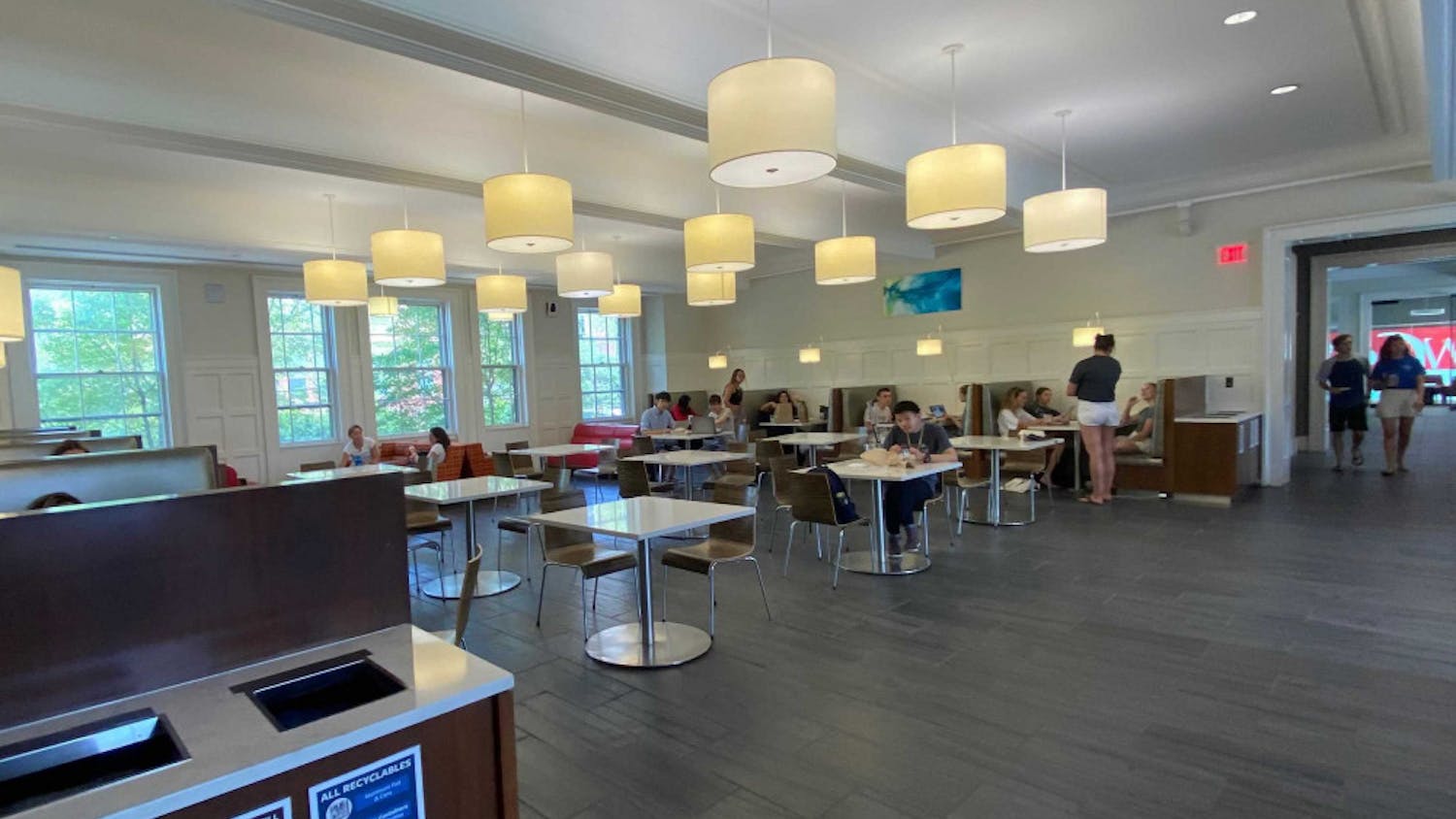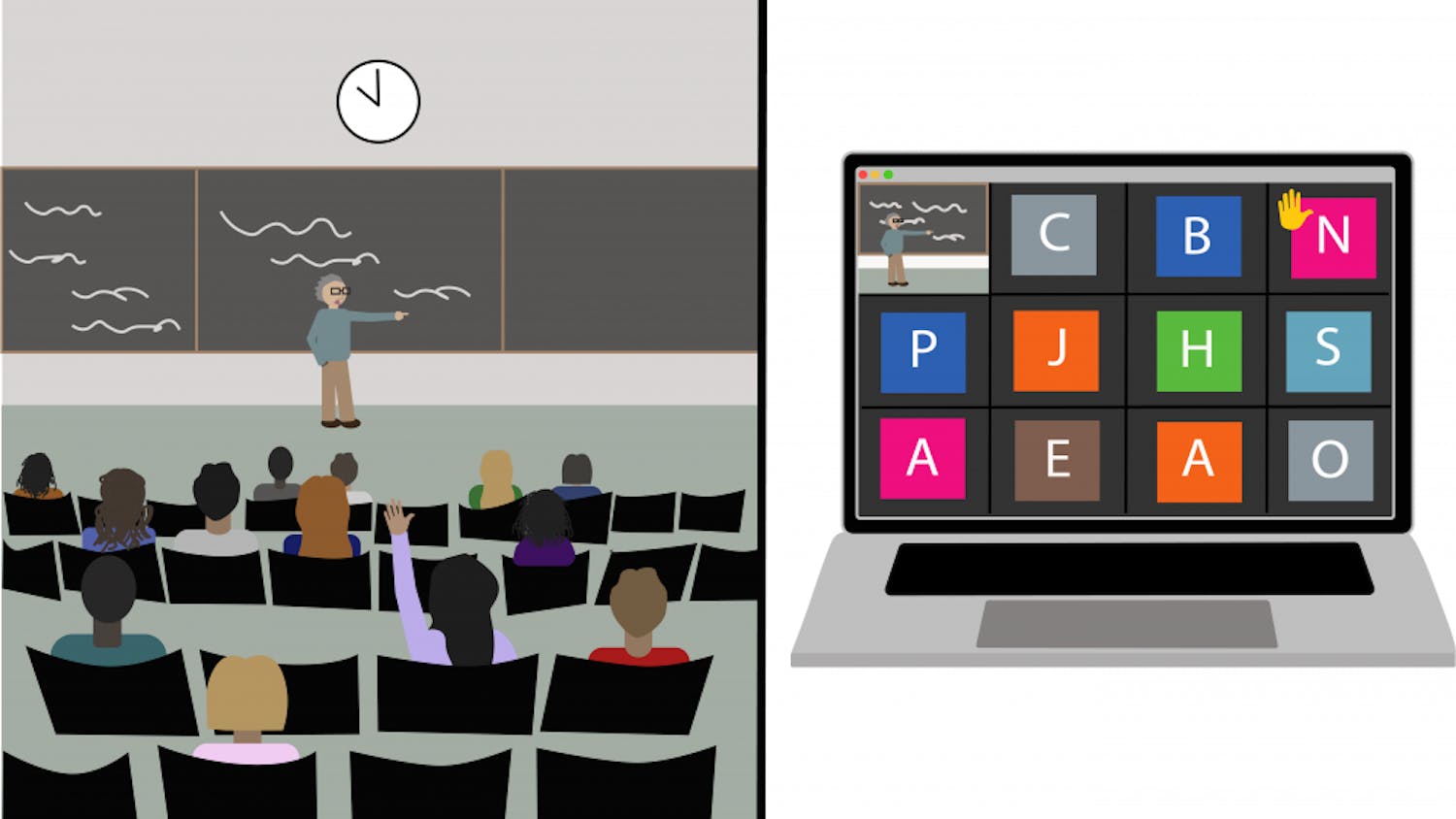For many students, it's impossible to overlook the often crude, at times intellectual and constantly evolving graffiti that anonymously accumulates in campus bathroom stalls. Despite their amusing nature, few people would deem these scrawled messages worthy of the term "art." But this notion may change with the exhibition of "No one will see us," a sound installation by Alex Kotch '06 in List 221 from March 5-10.
Kotch, a music concentrator, was initially inspired when he stopped at the men's bathroom of the Rockefeller Library last fall.
"When I went to the bathroom I was struck by the incredible scrawls I saw on the walls. I went and grabbed a notebook to write them down," Kotch said.
Over the following two months, Kotch continued to compile a collection of what he calls "scribblings" and enlisted the help of female friends to document graffiti from women's bathrooms as well. Nearly all the graffiti in the exhibit was found in bathrooms across campus, from places like the Rock, Sayles Hall, Orwig Music Building and Steinert Choral Room. A few messages came from AS220, an arts center in Providence.
"I wrote down everything. I wanted this to be an accurate depiction of the bathroom walls, without bias," Kotch said.
The installation includes a wide range of messages that run the gamut from crude anatomical descriptions to philosophical musings. Other items include "sex tips for inquiring froshes," appeals for advice, requests for dates and personal interest surveys. Kotch described the installation as "interesting, provoking and worthy of the 'R' rating."
Some messages include: "Who's got my nose candy?," "I'm sick of bad sex!," "Surround yourself with people who make you believe you're good enough," "Cacophony", and "It's OK!! Being awkward isn't so bad (PS I'm really awkward too...)."
Twelve of Kotch's friends, who are all involved in the performing arts, joined him to record the messages into a series of audio tracks. The installation will use eight speakers throughout the room to re-create the perception of the separate female and male realms, which exist naturally in public bathrooms. The voices will meet in the center of the room, allowing the comments of both sexes to generate a dialogue.
"I tried to incorporate enough voices to re-enact the source material and really display the differences among the messages. I encouraged my friends to really embrace the opportunity to act," Kotch said.
Each speaker will be connected to one of four CDs that will shuffle randomly through the tracks, creating constantly unique scripts. Kotch estimated that there is approximately one hour's worth of recording for both the male and female messages.
Kotch said he wanted to give a personal spin to the wide range of anonymous opinions while demonstrating social and gender trends in the community at Brown. Because the sources remain anonymous, each person who hears the installation is free to interpret the messages in a unique and meaningful way, he said.
"I think you can learn a lot about society - and people's minds - by examining the sentiments, jokes, and put-downs they express in their messages, but would never voice in public," he said.
While collecting graffiti, Kotch noticed a drastic difference between the scribbles in the male and female bathrooms. Men tend to write short, vulgar messages, while women tend to be more sentimental - exploring issues of love, abortion and intimacy. Women also often tend to engage in sequential graffiti, where a question is posed and responses accumulate over time, Kotch said.
Kotch does not believe this difference represents an intellectual gap between males and females. He said he believes the variation in content between the sexes reflect the different mindset of males and females while in the bathroom.
"When men go to the bathroom they generally are going right in and out. When women go to the bathroom they tend to socialize and gossip, and it becomes a much more emotional experience. Also, I think the social vulnerability of women might play a role. Even though they are in a private bathroom, it is possible they still feel uncomfortable disrobing, and therefore have more serious contemplation."
The installation will also offer an opportunity for visitors to generate new bathroom graffiti. In two corners of the room, makeshift stalls and mirrors will be provided with markers for students to write their own messages. Kotch will use these scribbles in a follow-up piece containing photographs or sound clips for display at a subsequent exhibit.
"I'm curious to see what people will write when they are no longer anonymous. It will be a new form of hyper-conscious graffiti," Kotch said.
"I think the great thing is that graffiti art is infinitely replicable, even within the same community. No matter what, it will always have meaning and implications, and it will always continue to evolve."




